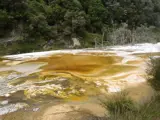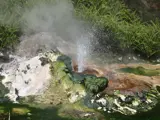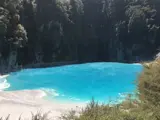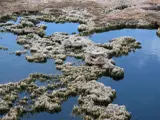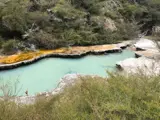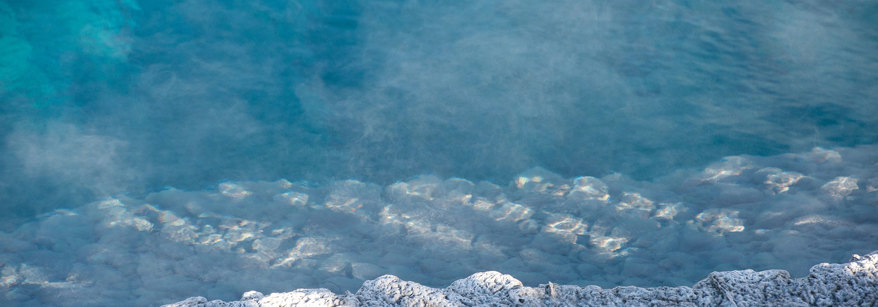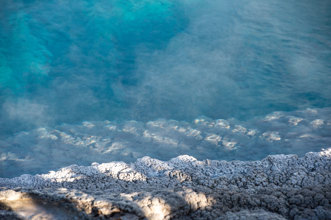A protected system with numerous surface features of national and international importance this system was the site of the Pink and White Terraces which were buried as a result of the 1886 Tarawera eruption.
One of the larger systems within the Bay of Plenty region the system extends southwards towards Waiotapu, Waikite and Reporoa geothermal systems which are located within the Waikato region, see the Waikato Regional Council website for more information on these areas.
Surface features
Today the surface features in the Waimangu-Rotomahana-Tarawera system are dominated by large crater lakes, boiling springs discharging near-neutral pH chloride waters of 85-100°C, geysers, fumaroles and hot ground. The surface features in the Waimangu Valley did not appear until about 5 years after the 1886 eruption, while those at Rotomahana evolved as the new lake filled. The largest features are focused in Echo Crater (Waimangu Geyser and Frying Pan Lake) and Inferno Crater. These and the adjacent Raupo Pond Crater have been the focus of several hydrothermal eruptions or disturbances since the early 1900’s. The latest was in 2016. The vegetation in the area has all established naturally post the 1886 eruption.
The historic surface activity in or near Echo and Inferno craters is dominated by spectacular geysering associated with the Waimangu Geyser (‘black or inky water’) that played between 1901 and 1904 ejecting hot water and rock up to 400 m high. A hydrothermal eruption lasting three days within Echo crater in April 1917 created Frying Pan Lake.
Use and development
Although a protected system, Waimangu Valley-Lake Rotomahana has developed as a tourist attraction (www.waimangu.co.nz). There are numerous outstanding surface features of national and international importance. These range from large crater lakes and hot springs to steaming cliffs and are accessible to the public.
